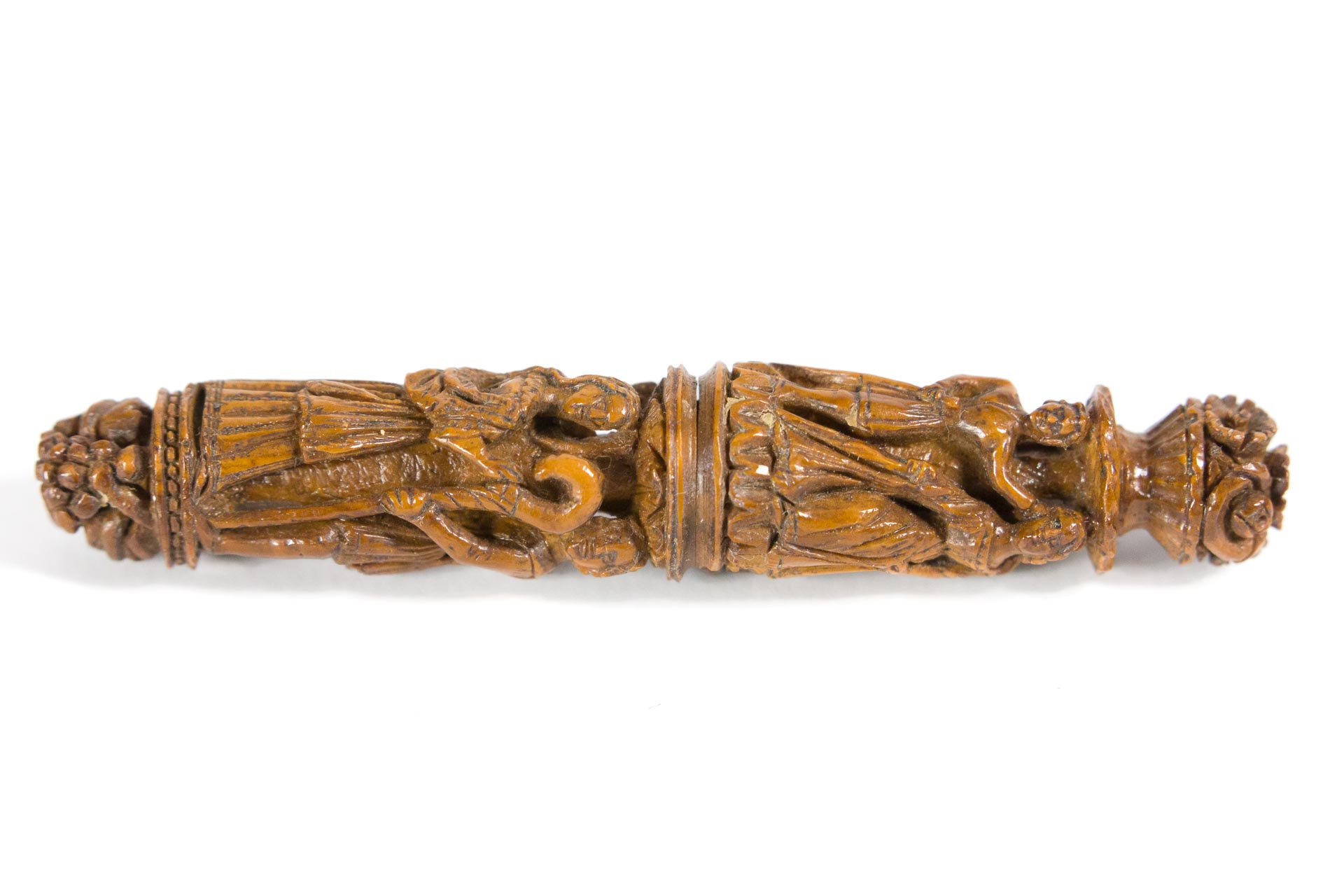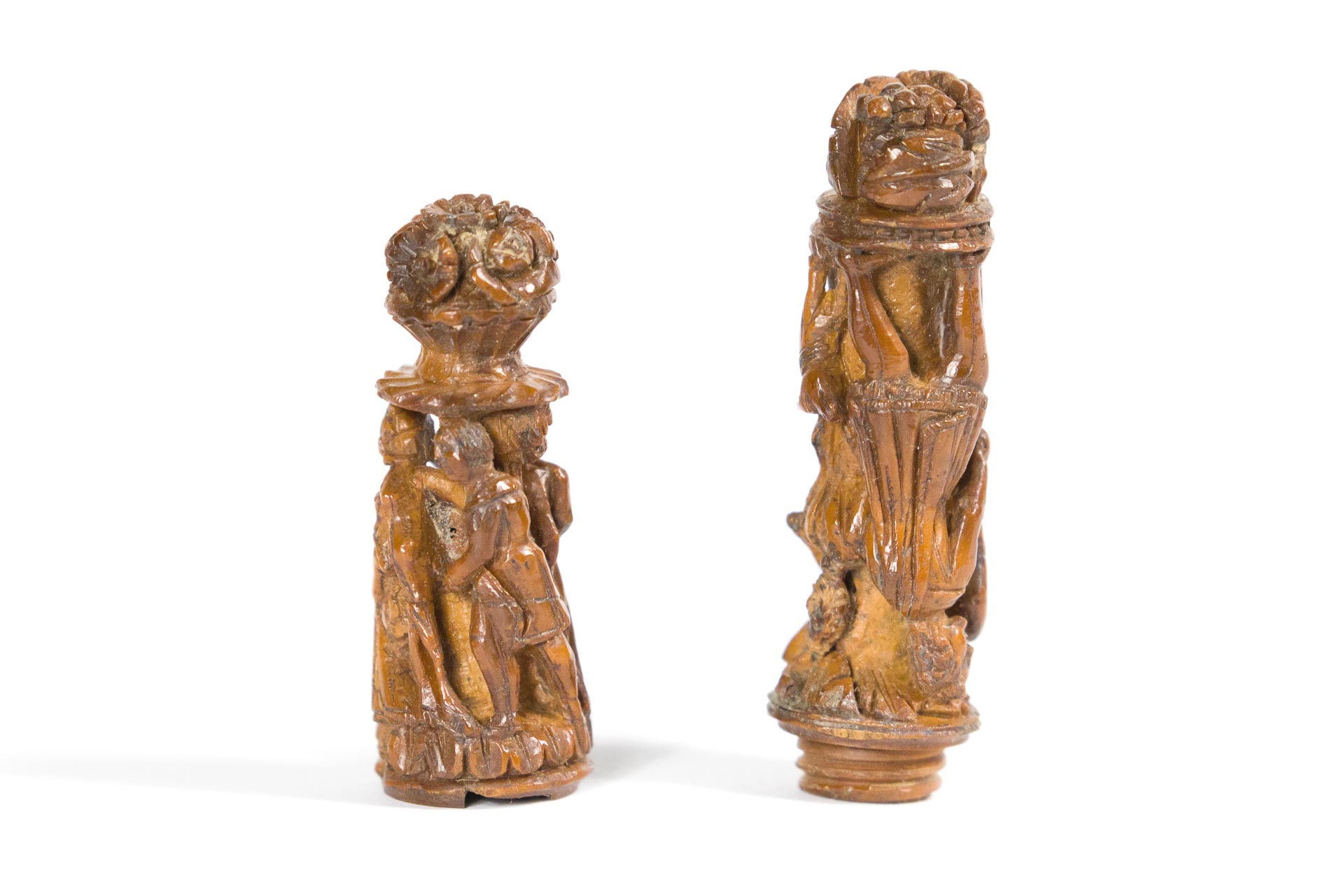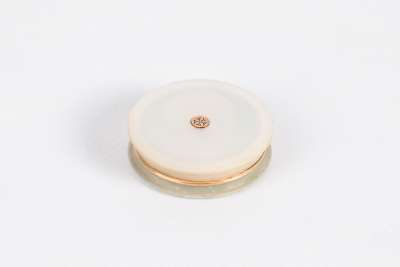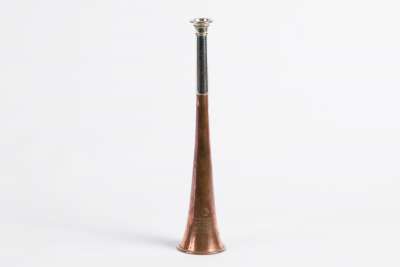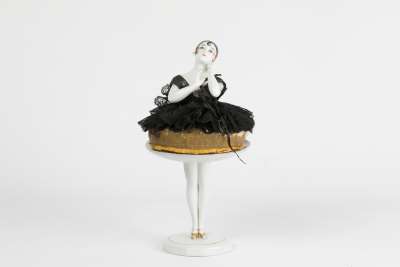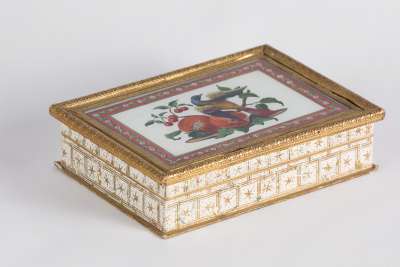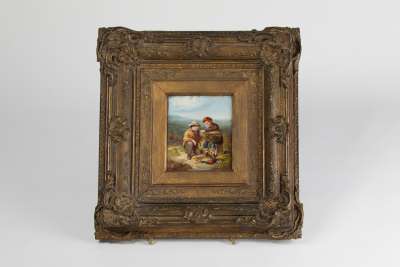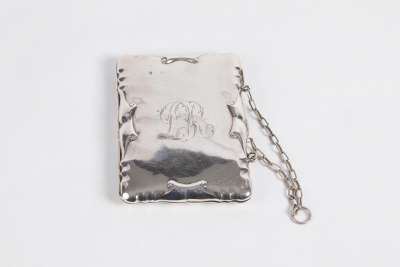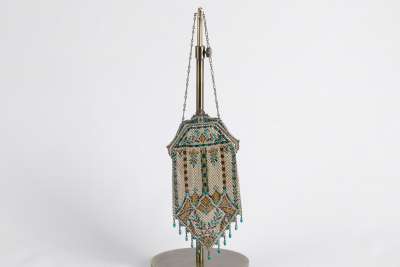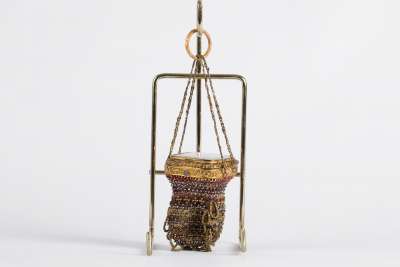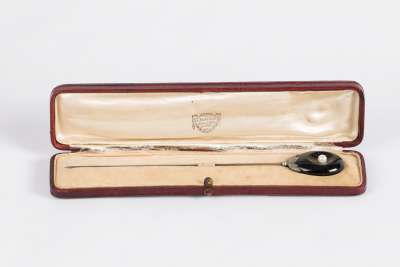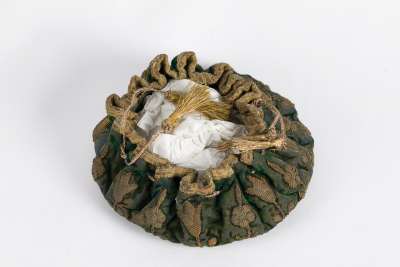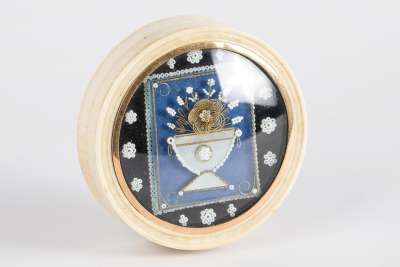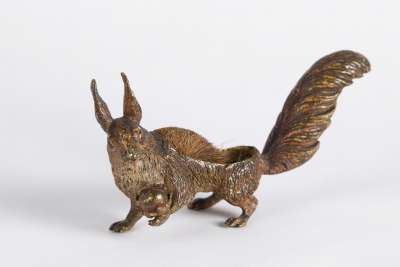This antique needle case, crafted circa 1840-1850, is meticulously carved from a coquilla nut, a material known for its fine grain and durability. The design features a couple standing beside a tree, with an additional small figure appearing to hide or listen between them. This intricate depiction showcases the artisan's attention to detail and artistic flair. The needle case originates from an unknown maker, possibly European, given the style and material choice, reflecting the period's trend for crafting utilitarian yet decorative objects.
Condition Report
This coquilla nut needle case is in good condition, with minimal wear that aligns with its age and use over time. The carvings remain distinct, and the overall structure is intact, which is noteworthy for an item of its age. The mechanism for opening and closing the case functions smoothly, suggesting careful preservation and a testament to the quality of craftsmanship from the mid-19th century. This piece has likely been handled with care over the decades, maintaining its historical and functional integrity.
Dimensions
Weight: 10gm, Length: 8.5cm, Width: 1.5cm, Height: 1.5cm.
A Practical Accessory for the Discerning Seamstress
The primary use of this needle case would have been as a practical accessory for storing needles, an essential tool for the discerning seamstress. During the mid-19th century, needlework was a prevalent domestic activity, and such cases were designed to keep needles safe and organised. The case's compact size and sturdy material offered protection and portability, making it a valuable companion for those engaged in sewing or embroidery.
Fine Example of 19th Century Decorative Arts
This needle case exemplifies the decorative arts of the 19th century, where utilitarian objects were often infused with artistic elements. The choice of a coquilla nut not only provided a robust material but also allowed for intricate carving that reflects the era's appreciation for detailed craftsmanship. The depiction of figures and nature scenes was a common motif, offering a glimpse into the aesthetic preferences and cultural influences of the time. Such items were both functional and ornamental, serving as a testament to the period's artistic sensibilities.
The Craft of Coquilla Nut Carving
The needle case showcases the specialised craft of coquilla nut carving, a technique that emerged due to the nut's availability and workability. Artisans of the time utilised simple hand tools to create detailed designs, a skill requiring precision and artistry. The coquilla nut, native to tropical regions, was prized for its hardness and the ability to achieve fine detailing. This process involved careful planning and execution, resulting in durable objects that could withstand regular use while retaining their decorative appeal.
Mystery of the Maker
While the specific maker of this needle case remains unknown, it is likely the work of a skilled artisan familiar with the coquilla nut's properties. During the mid-19th century, many such items were crafted by small workshops or individual craftsmen who specialised in producing decorative and functional objects. The lack of a maker's mark is not uncommon for the period, as many artisans focused on the craft rather than branding. This anonymity adds an element of mystery and allure, inviting speculation about the hands that crafted this piece.
Collected by Enthusiasts of Decorative Trinkets
Antique needle cases, such as this one, are often sought after by collectors who appreciate the intricate craftsmanship and historical significance of such items. The appeal lies in their dual function as practical tools and decorative pieces, offering insight into the domestic lives and artistic tastes of the past. Collectors value the unique designs and the stories they tell, making them cherished additions to collections of 19th-century decorative arts. This needle case, with its detailed carving and historical context, represents a fascinating piece of history that continues to captivate enthusiasts today.

